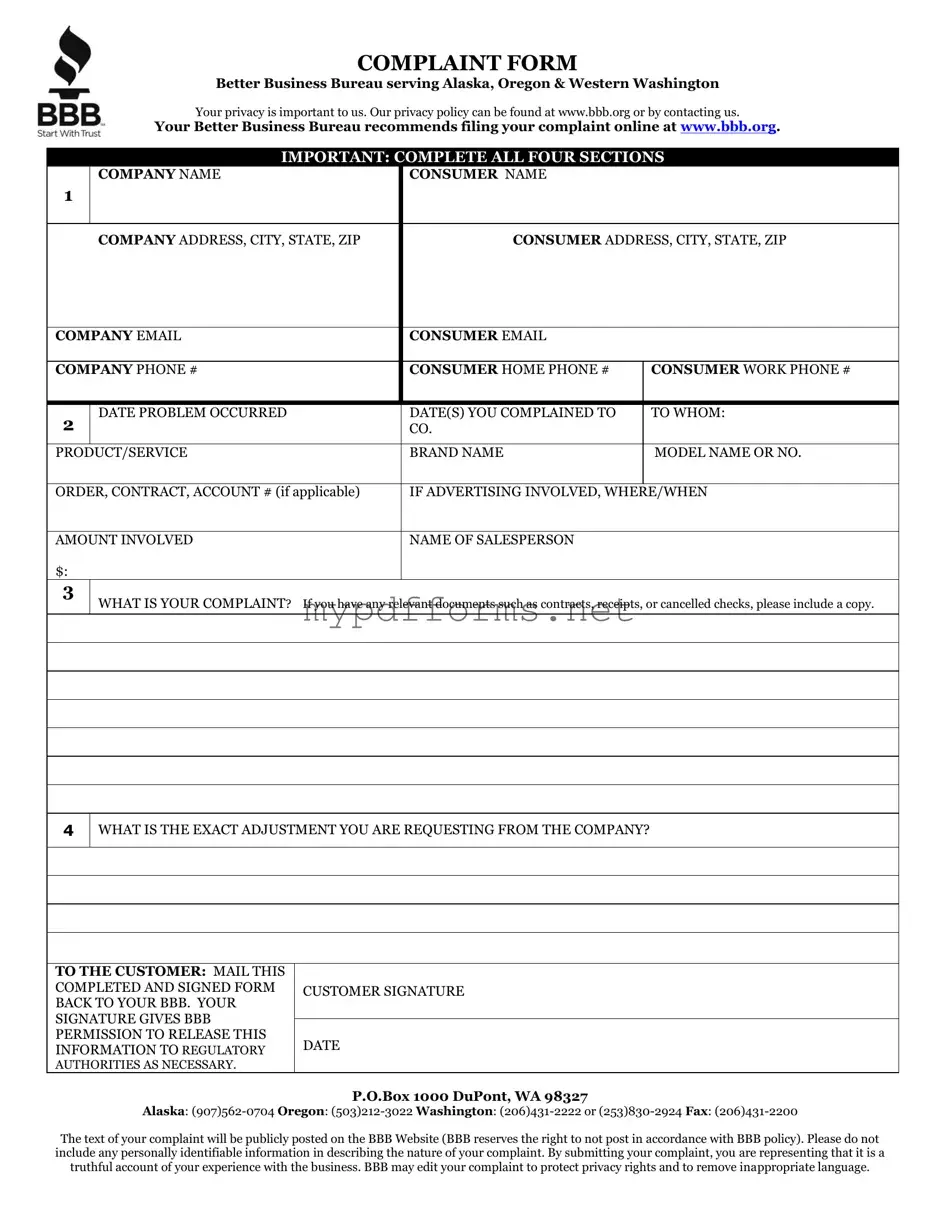The Consumer Complaint Form is similar to the BBB Complaint Form in that both are designed to address grievances consumers have with businesses. The Consumer Complaint Form is typically used to report issues related to products or services that do not meet expectations. Just like the BBB form, it allows individuals to detail their experience, providing a structured way to express dissatisfaction and seek resolution. The focus is on consumer rights and ensuring that businesses are held accountable for their actions.
The Federal Trade Commission (FTC) Complaint Assistant serves a similar purpose. It allows consumers to report unfair business practices or fraud. Both forms encourage individuals to share their experiences and provide necessary details for investigation. The FTC Complaint Assistant, however, has a broader scope, addressing issues that may involve federal laws, while the BBB focuses more on local businesses and their reputations.
The State Attorney General’s Complaint Form is another comparable document. This form is used to report violations of state consumer protection laws. Like the BBB Complaint Form, it provides a platform for consumers to voice their concerns. However, the State Attorney General's form often leads to legal action against businesses, whereas the BBB focuses on mediation and resolution between consumers and businesses.
The Department of Consumer Affairs Complaint Form is also similar. It allows consumers to file complaints against businesses for unfair practices. Both forms aim to protect consumer rights and promote fair business practices. The Department of Consumer Affairs often has regulatory authority, which can lead to investigations and penalties, unlike the BBB's mediation approach.
The Online Review Platforms' Complaint Feature offers a way for consumers to report issues directly on review sites. Like the BBB Complaint Form, it helps consumers share their experiences with others. However, online reviews are more public and can influence a business's reputation immediately, while the BBB process is more private and focused on resolution.
The Product Safety Complaint Form, used to report unsafe products, is another related document. It allows consumers to inform authorities about hazardous items. Both forms emphasize consumer safety and aim to prevent harm. The key difference lies in the focus; the Product Safety Complaint Form targets product safety issues, while the BBB Complaint Form addresses service and business practices.
The Small Claims Court Complaint Form is also similar in that it allows consumers to take action against businesses. This form is used to file a legal claim for damages. While the BBB Complaint Form seeks resolution through mediation, the Small Claims Court form initiates legal proceedings. Both serve as avenues for consumers to seek justice but differ significantly in their processes and outcomes.
In the context of ensuring accountability and addressing consumer concerns, completing forms such as the BBB Complaint form is essential, and for those needing specific legal documentation, the Illinois Power of Attorney form is also available. This important document allows individuals to appoint others to manage their affairs, and for further information or resources, you can explore Illinois Forms.
The Customer Feedback Form, often used by businesses, shares similarities with the BBB Complaint Form. Both allow consumers to provide feedback on their experiences. However, the Customer Feedback Form is usually internal and aimed at helping businesses improve, while the BBB form is a public complaint that can affect a business’s reputation. Both are valuable for understanding consumer experiences, but their purposes differ.
Finally, the Mediation Request Form is akin to the BBB Complaint Form in that it seeks to resolve disputes. This form is often used in various contexts, including family law or business disputes. Both forms promote communication between parties and aim for a satisfactory resolution. However, the Mediation Request Form may involve more formal processes, while the BBB focuses on informal mediation between consumers and businesses.
